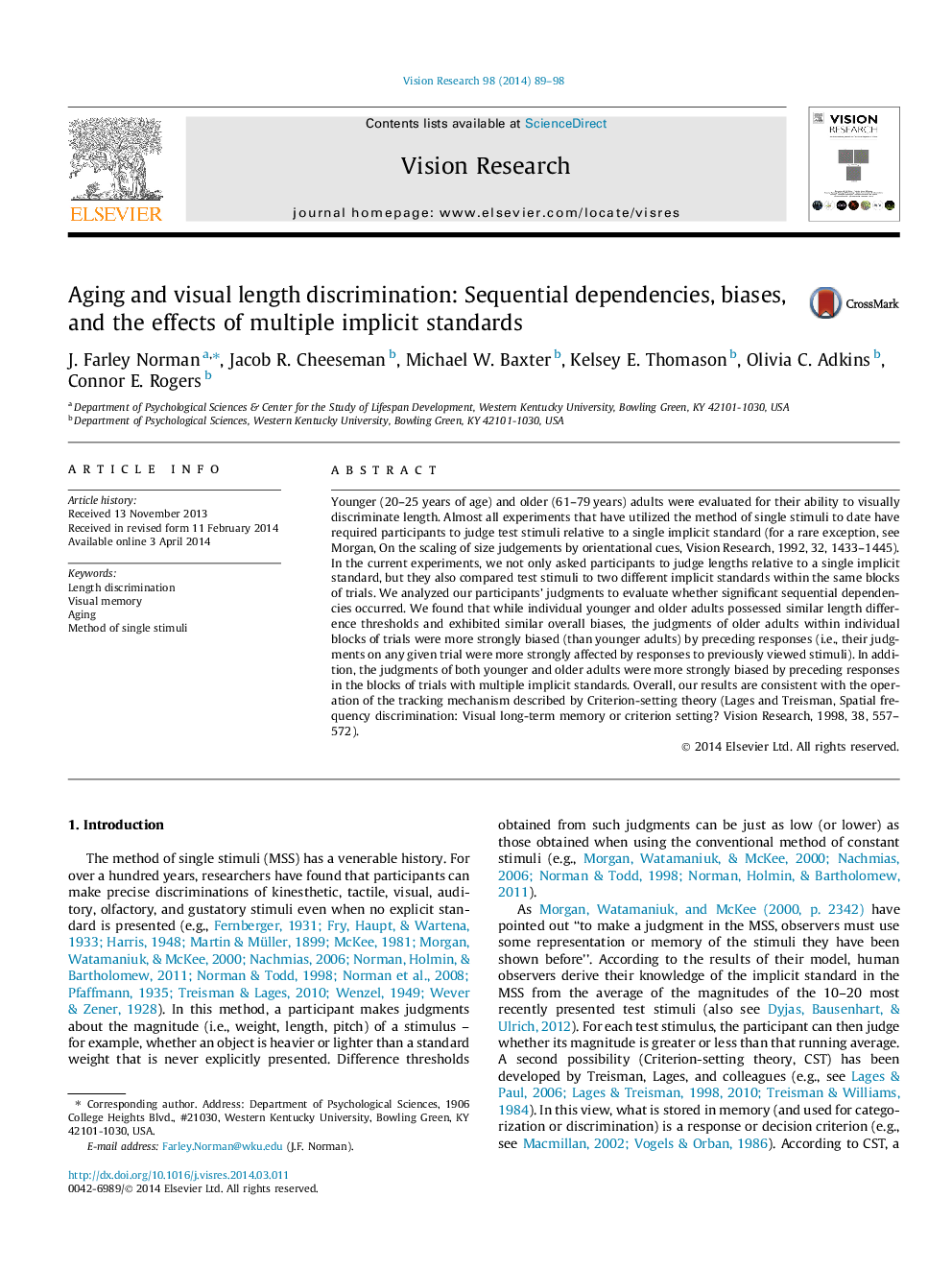| Article ID | Journal | Published Year | Pages | File Type |
|---|---|---|---|---|
| 6203517 | Vision Research | 2014 | 10 Pages |
â¢The method of single stimuli was used to investigate length discrimination.â¢Biases and imprecisions occur for stimuli judged against multiple implicit standards.â¢The participants' judgments were frequently biased by responses on previous trials.â¢Preceding responses affect older adults' judgments more than those of younger adults.â¢Younger and older adults possess similar length difference thresholds.
Younger (20-25Â years of age) and older (61-79Â years) adults were evaluated for their ability to visually discriminate length. Almost all experiments that have utilized the method of single stimuli to date have required participants to judge test stimuli relative to a single implicit standard (for a rare exception, see Morgan, On the scaling of size judgements by orientational cues, Vision Research, 1992, 32, 1433-1445). In the current experiments, we not only asked participants to judge lengths relative to a single implicit standard, but they also compared test stimuli to two different implicit standards within the same blocks of trials. We analyzed our participants' judgments to evaluate whether significant sequential dependencies occurred. We found that while individual younger and older adults possessed similar length difference thresholds and exhibited similar overall biases, the judgments of older adults within individual blocks of trials were more strongly biased (than younger adults) by preceding responses (i.e., their judgments on any given trial were more strongly affected by responses to previously viewed stimuli). In addition, the judgments of both younger and older adults were more strongly biased by preceding responses in the blocks of trials with multiple implicit standards. Overall, our results are consistent with the operation of the tracking mechanism described by Criterion-setting theory (Lages and Treisman, Spatial frequency discrimination: Visual long-term memory or criterion setting? Vision Research, 1998, 38, 557-572).
